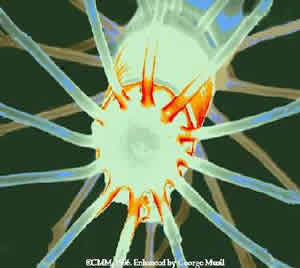|
Protozoa
The protozoa are one-celled microorganisms. You need a microscope to see them. They do breathe, move, and reproduce like multi-celled animals. They live in water or at least where it is damp. Some protozoans are harmful to man because they can cause serious diseases. Others are helpful because they eat harmful bacteria and are food for fish and other animals. There are three different types of protozoa: Ameba, Paramecium, Euglena. Ameba - It can be found in ponds and rivers and on the surface of the leaves of water plants. It looks like a grayish blob under a microscope. Its shape is constantly changing as it moves along. One characteristic of the ameba is its false feet that scientists call pseudopodia. In order to move, the ameba extends its false feet out, and the rest of the body follows the false feet along. The ameba eats little animals and plants. It reaches out with its false feet to surround a plant or animal and then puts it right into the cell. Paramecium - It can be found in ponds covered with scum. It is shaped like the bottom of a shoe. It is covered with hair-like structures called cilia. It uses its cilia to move around in all direction. Euglena - The euglena is like a plant and like an animal. It is pear shaped. It uses its tail called a flagellum to move through the water. The euglena can make its own food using the chlorophyll in it, which is different from the other protozoans. The euglena can also use photosynthesis to makes its food. When it is in the dark, it can get food like an animal. It takes in tiny plants and animals much like the ameba and paramecium.
|
||||||||||||||||
